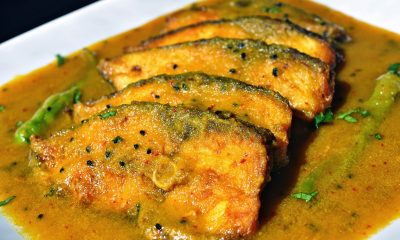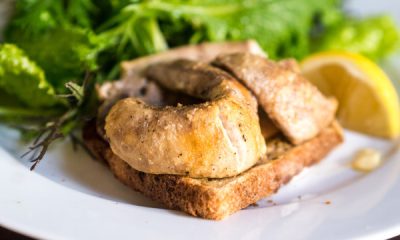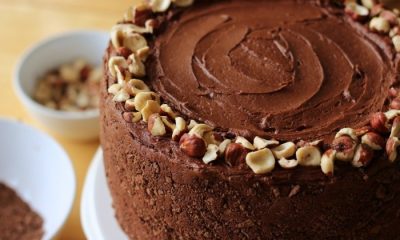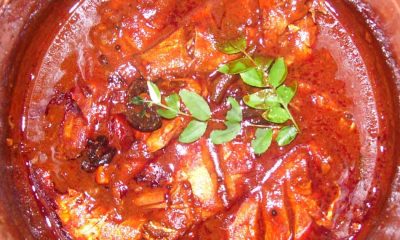Food Blogs
Quenelles De Poisson Recipe
Fish quenelles in France are usually labeled quenelles de brochet, and are presumably made from pike, a fish of excellent flavor but so webbed with little shadlike bones that a quenelle is the most convenient way of eating it. If you do use pike, then, you will have to pound it in a mortar and then sieve it or you’ll never rid it of bones. However, boneless fish filets may be pureed as is.
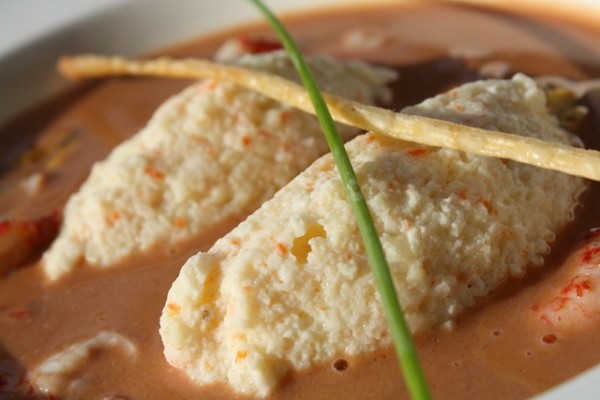
| Servings |
MetricUS Imperial
|
Ingredients
- 1 cup Water
- A 1½-quart heavy-bottomed saucepan
- 1 tsp Salt
- 4 Tb butter
- cup ¾flour scooped and leveled
- 2 Large Eggs
- 2 egg whites ¼ cup
- A 4-quart mixing bowl with a tray of ice cubes and water to cover them
The quenelle mixture
- 1 ¼ lbs. well-chilled skinless and boneless lean fish filets from the preceding suggestions 2½ packed cups
- A food processor steel blade
- tsp ½salt
- tsp ¼White Pepper
- 4 to 6 to 8 or more Tb chilled heavy whipping cream
- A rubber spatula
- A saucepan of almost simmering salted water
- 2 pinch Tb chopped truffle OR a bigof nutmeg
Shaping quenelles and poaching them
Ingredients
The quenelle mixture
Shaping quenelles and poaching them
|

|
Instructions
- Following the general directions for pâte à choux, bring the water to the boil in the saucepan with the salt and butter. As soon as the butter has melted, remove the saucepan from heat and beat in all the flour at once with a wooden spatula or spoon. Then beat over moderately high heat for several minutes until the mixture forms a mass. Off heat and one by one, beat in the eggs, then the egg whites. Set saucepan in the bowl of ice and stir for several minutes to cool; leave in the ice while you prepare the fish, and be sure the pâte à choux is well chilled before you combine the two.
- Cut the chilled fish filets into 1-inch strips, then into 1-inch pieces, and place in the bowl of the processor, along with the chilled pâte à choux from the previous step, salt, pepper, and 4 tablespoons of chilled cream. Process 30 seconds or so, stopping if necessary to scrape down sides of bowl with rubber spatula. If the mixture seems stiff, blend in more cream by the tablespoon—you want to add as much as it will take, but the mixture must hold its shape well in a mass on the spoon.
- Scoop out a dollop as a test, drop it into the almost simmering water, and let it poach several minutes. Taste it: process in more cream if you think it can be absorbed—but better too little than too much! Add more seasonings, too, if you think them necessary. Then blend in the truffle or nutmeg. (If you are not proceeding at once to the next step, refrigerate the mixture.)
- (The spoon method described here makes the most delicate quenelles. A neater-looking but less light-textured alternative is to roll them into cylinders on a floured board as for the gnocchi.)
- With a wet spoon, dip out a rounded mass of the cold quenelle paste. Transfer the spoon to your left hand. Smooth the top of the paste with the inverted bowl of the second wet spoon. Then slip the bowl of the second spoon under the quenelle to loosen it and drop it into the barely simmering liquid. Rapidly form quenelles with the rest of the paste in the same manner. Poach them uncovered for 15 to 20 minutes, never allowing the water to come beyond the barest suggestion of a simmer. The quenelles are done when they have about doubled in size and roll over easily. Remove with a slotted spoon, and drain on a rack or a towel.
- (*) If the quenelles are not to be served immediately, arrange them in a lightly buttered dish, brush them with melted butter, cover with waxed paper, and refrigerate. They will keep perfectly for one to two days.
Recipe Notes
Choice of fish:
Choose fish with lean, close-grained flesh of a slightly gelatinous quality. Flimsy, light-textured fish, like most flounder, will absorb little cream and will therefore produce a rather dull and dry quenelle. Halibut and monkfish do nicely, as does gray sole or winter flounder. Very fresh petrale sole is also excellent. Less available choices are silver hake (merlan), green or ocean cod (colin), conger or sea eel (congre).

